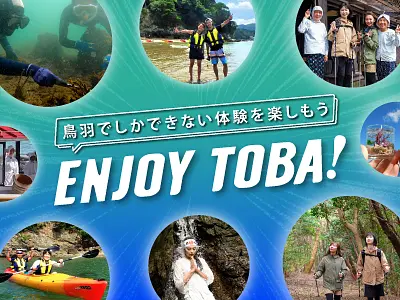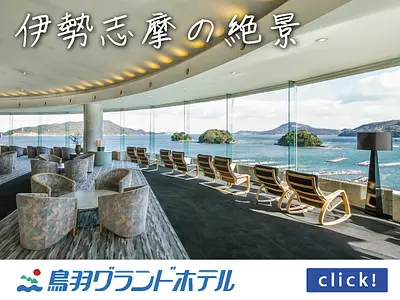I will tell you from Sekijuku. The splendor of our town and the richness of living surrounded by nature.
Sekijuku, located in KameyamaCity, is a post town on the 53rd station Tokaido, and the townscape that retains the atmosphere of those days has been selected as a nationally important preservation district for groups of traditional buildings. Today, in Sekijuku, the people who protect the beautiful scenery of the town, and the people who convey the beauty of Kameyama's nature and traditional way of life, are still active with their dreams in their hearts.

What is Sekijuku?

Of the 53 inns established during the Edo period, Tokaido is the 47th, counting from Edo in the 53rd itinerary. Sekijuku
The area is lined with townhouses that retain the charm of the Edo and Meiji eras, and at that time was bustling with people passing through the streets on Sankinkotai and Ise pilgrimages.
In 1984, it was the only area in Mie Prefecture to be selected as a ``Nationally Important Preservation District for Groups of Traditional Buildings,'' and people came together to protect the traditional townscape of Sekijuku. I am.
Until the townscape is preserved

Mr. Hattori is the 14th generation owner of Fukagawaya, a long-established shop in Sekijuku that has been manufacturing and selling the famous Sekinoto confectionery since the Edo period.
He talked about the charm of the town of Sekijuku, where he was born and raised, and how Sekijuku has maintained its beautiful scenery to this day.

It is said that town development in the Showa era was based on a scrap-and-build method, in which buildings were built, demolished, and new ones built, and in many cases, things that were popular at that time were built and then disappeared.
``It's not wrong to build something new because the number of young people in the town is decreasing rapidly, but the town's landscape and culture are being destroyed as a result.''
In 1975, the system of traditional building preservation districts was launched, and efforts were made to preserve historic villages and townscapes throughout the country, and Sekijuku immediately joined in, and Mr. Hattori too. The `` Tokaido Sekijuku Machinami Preservation Society'' to which I belong has been established.
``As the 400th anniversary of the establishment of Tokaido in 2001 approached, Sekijuku began to attract attention from outside the city, and I think this was an opportunity for many people to realize the charm of their town. Masu"
From around that time, the movement to preserve the townscape grew even stronger, and the activities of the Townscape Preservation Society also became more active.
Leave behind the feeling that “the town is important”

One of these activities is the production of "Sekijuku Karuta."
Sekijuku The Sekijuku makuta, themed on the old townscapes and historic sites of Sekijuku, will provide an opportunity for people of all ages, from children to the elderly, to learn about the history and culture of while playing with it.
``Right now, I'm working on a guidebook that will be like a bible for walking around Sekijuku, with an arrangement of this Sekijuku karuta and explanations,'' he said, explaining his future plans.

"It is more difficult to preserve people's feelings about how important these buildings and townscapes are than to preserve buildings. The challenge is how to connect those feelings."
Hattori says that in order to preserve the townscape, it is important for people to understand the charm of the town and recognize that it is important and must be preserved.
They are proud of Sekijuku, which is reminiscent of ancient Japanese scenery and the sights of old travelers, and are working to ensure that Sekijuku still looks even more beautiful 10 or 50 years from now.
Kura Cafe Chakura Sabo
A new wind has been blowing in Sekijuku with Chagura Chabo, a chic warehouse-style cafe run by Mr. Hattori that blends in with the streetscape of Sekijuku.

Traditional Japanese architectural techniques are used in the storehouse, including the ``yoroshibuki'' method, in which boards are layered like armor. , a wall with vivid art appears there.

This space was created by artist SHETA, who has also collaborated with FILA and COACH, and is a pop and fun space that is the complete opposite of the calm atmosphere of a storehouse.
It brings freshness to Sekijuku by incorporating modern art while maintaining its old-fashioned exterior.

What you can enjoy at Chazo Sabo is self-drip coffee that you can brew yourself.
It is said that it is rare in the prefecture to introduce a self-drip coffee system, and it is popular because you can experience the fun of brewing your own coffee and the difference in taste.

“Following the footsteps of Chazo Sabo, around 15 new stores opened in Sekijuku over the next three to four years, all of which were built with consideration to the scenery of Sekijuku order to preserve the townscape, We are currently searching for sightseeing spots that are unique to Sekijuku, which we have always taken pride in.”

Jikon

In Sekijuku, `` Jikon'' has a gallery and workshop with a theme of lifestyle such as food, clothing, and shelter.
“I originally worked as a pottery artist, but as I planned and held many group exhibitions with friends who also made things, the store became what it is today.”
says Mr. Jikon, whose husband and wife run Jikonke.
The gallery displays pottery, dyed goods, secondhand tools, original textiles, and more from artists from all over the country.

Sei indigo dyeing packed with wisdom for daily life

Mr. Yoneda also experiences what he has learned and felt about life in Jikon.
The workshop is located a short walk from Jikon 's gallery.
One of the experiences that Mr. Yoneda offers is ``Sei Aizome'', which is dyed using traditional techniques.
The calm blue color with a sense of transparency is gentle and gives a sense of strength.

Unlike indigo dyeing, which generally uses chemical dyes, Sei Aizome is fermented using only sukumo, which is made by fermenting indigo leaves, and lye, which is made from hardwood ash, to maintain the dye solution. This term refers to products dyed using natural materials such as shellfish ash.

Indigo was introduced from China as a herbal medicine. It is said that during the Edo period, 70 to 80% of people wore indigo-dyed kimonos.
Many people wore them because they experienced the antibacterial and deodorizing effects of indigo dyeing, and there was a custom of carrying an indigo tenugui with them when they went on a trip.
In addition, the cloth produced by spinning cotton into thread, dyeing it with indigo, and hand-weaving it is very expensive. After its role as kimono was completed, it was used as diapers and futon skin.

``First of all, for indigo dyeing, you need good lye.Good lye is clear lye with a high pH value.
Make lye using hardwood ash and boiled well water. Lye can also be used as a detergent. The ashes left after removing the lye have been used as a glaze for pottery since ancient times. I'm giving it to a friend who is a potter."
During this experience, you can feel the wisdom and cycles of people's lives in the past.

F4 possibilities and tea experience

There is a tea plantation managed by Mr. Yoneda at the foot of the Suzuka Mountains, about 20 minutes by car from Sekijuku.
Mr. Yoneda collaborated with local tea in the past when marketing Japanese crafts in Taiwan and China, which led him to turn his attention to Japanese tea and become a producer. Then, as fate would have it, I encountered a tea plant from Taiwan.
The tea plant is ``F4'', a wild tea from Taiwan, and the ``F'' in FORMOSA means ``beautiful island'' in Portuguese, which apparently refers to Taiwan.
F4 was planted by Tsutomu Kawato, who worked in the tea industry in Taiwan during the Japanese colonial period, and returned from Taiwan after the end of the war, and is only found in KameyamaCity. Mr. Kawato expanded tea production throughout Mie Prefecture and exported it overseas. He is an innovator who has made Mie Prefecture the number one tea producing area in Japan in terms of production volume and quality.

At Jikon, you can experience enjoying tea made in this way.
White tea is a slightly fermented tea that is finished through a process called withering and drying.
In China, there is a saying, ``One Year Tea, Three Years Tea, Seven Years Bao'' (The first year is tea, three years is medicine, and seven years old white tea is treasure), which is based on the method of manufacturing white tea. However, it is said to be good for health and beauty, and develops into a fruity flavor.

For the first and second brews, I drink the tea that Mr. Yoneda brews for me, and then I make my own tea while following his instructions.
“Tea and tea utensils are being passed down through friendly competition.”
Speaking of Banko ware, it is a teapot. The lidded bowl that Mr. Yoneda showed me was apparently made in collaboration with a Banko-yaki craftsman. The design allows you to brew delicious fermented tea.

Mr. Yoneda uses various means to share what he thinks is good about the lifestyle he has experienced so far.
When I asked them what they thought a rich life meant,
“I feel that a lot of things have been lost in the pursuit of efficient and convenient things.It is something called physical sensation and experience, which cultivates our senses.To cultivate our senses, we need to Really immerse yourself in nature and know that you too are part of the cycle of nature.There is no beauty greater than the colors and shapes of nature, and how to connect what is born from heaven and earth. I guess that's the role of humans."
You can return to the origins of your current lifestyle and realize once again that humans have received many blessings and riches from nature.

basic information
Tokaido Sekijuku
[Address] Kizaki, sekicho, Shinsho, Sekimachi, KameyamaCity
[Official URL] https://www.city.kameyama.mie.jp/soshiki/seibun/chiikikanko/kankokoryu/docs/2014112312294/
Chakura Sabo
[Address] 1765-5 Shinsho sekicho KameyamaCity, 519-1111
[Telephone] 0595-86-5780
[Business hours] 10:00-16:00
[Closed days] Thursdays, other irregular holidays
Sei Indigo Dyeing Workshop Jikon
[Address] 250-1 Kizaki sekicho KameyamaCity, 519-1107
[Email] seki@jikonka.com
[Business hours] Please check the official Instagram (https://www.instagram.com/jikonka_seki/)
[HP] https://www.jikonka.com/
| Category | |
|---|---|
| season | |
| area |



